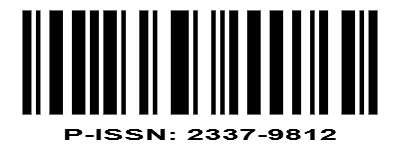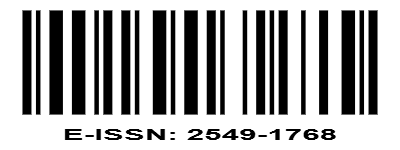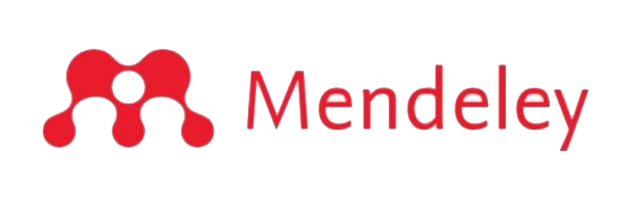IMPLEMENTATION OF E-LEARNING AS A MEDIA FOR BIOLOGY LEARNING BY HIGH SCHOOL TEACHERS IN BIREUEN DISTRICT
DOI:
https://doi.org/10.22373/biotik.v10i2.12931Keywords:
E-learning, biology learning, media learning, high school teachers, media implementationAbstract
The advantages of developing and implementing information technology in education include increased learning effectiveness and flexibility, as well as making the learning process easier for teachers and students. The study was conducted in the even semester of the 2018/2019 academic year in Bireuen Regency to determine the use of e-learning as a medium for high school biology learning. Mix methods research was used in this study. The participants in this study were all Bireuen Regency public high school teachers. The participants in this study were 12 biology teachers from SMAN 1 Bireuen, SMAN 2 Bireuen, and SMAN 2 Peusangan. A questionnaire is used to collect information. The data were analyzed using the percentage formula. The results showed that the use of e-learning as a medium for biology learning by teachers at SMA Bireuen Regency in terms of several criteria, namely e-learning planning was 77.08% and e-learning implementation was 72.50%. So it can be concluded that the use of e-learning as a medium for learning biology by teachers in senior high schools in Bireuen Regency as a whole is effective.Downloads
References
Safitri, N., Rahmat M., dan Syamsurizal. 2015. Pengembangan Pembelajaran Berbasis E-learning dengan Aplikasi Moodle Berdasarkan Teori Konstruktivistik Pada Materi Menganalisis Peluang Usaha Kelas XI SMK. Tekno-Pedagogi. Vol 5 (1). Hal : 64-81.
Cimer, A., 2012, What Makes Biology Learning Difficult and Effective: Student’s Views, Educational Research and Reviews, Vol. 7 No. 3, 19 Januari 2012, pp.61-71.
Purwanto. 2012. Evaluasi Hasil Belajar. Yogyakarta. Pustaka Belajar.
Munir. 2009. Pembelajaran Jarak Jauh Berbasis Teknologi Informasi dan Komunikasi. Bandung: Alfabeta.
Ibrahim, Doni Septumarsa dan Siti Partini Suardiman. 2014. Pengaruh Penggunaan E-Learning Terhadap Motivasi dan Prestasi Belajar Matematika Siswa SD Negeri Tahunan Yogyakarta. Jurnal Prima Edukasia. Vol2 (1). Hal : 70.
Rijki, R., dkk. 2018. Media Pembelajaran E-Learning Dalam Pembelajaran Pendidikan Agama Islam Di SMA Laboratorium Percontohan UPI Bandung. Indonesian Journal of Islamic Education. Vol. 5 (1). Hal : 54.
Purwaningtyas, Wasis D. D., Imam H. 2017. Pengembangan Modul Elektronik Mata Pelajaran Pendidikan Jasmani, Olahraga, dan Kesehatan Kelas IX Berbasis Online dengan Program Edmodo. Jurnal Pendidikan. Vol 2 (1). Hal : 121-129.
Arsyad, A. 2013. Media Pembelajaran. Jakarta: PT. Raja Grafindo Persada.
Solihudin, T. 2018. Pengembangan E-Modul Berbasis Web untuk Meningkatkan Pencapaian Kompetensi Pengetahuan Fisika Pada Materi Listrik Statis dan Dinamis SMA. Jurnal Wahana Pendidikan Fisika. Vol 3 (2). Hal : 51-61.
Hartanto, W. 2016. Penggunaan E-learning sebagai Media Pembelajaran. Jurnal UNEJ.
Downloads
Published
Issue
Section
License
Copyright (c) 2022 Nurlia Zahara, Rizky Ahadi

This work is licensed under a Creative Commons Attribution-ShareAlike 4.0 International License.
Authors who publish with BIOTIK: Jurnal Ilmiah Biologi Teknologi dan Kependidikan agree to the following terms:
- Authors retain copyright and grant the journal right of first publication with the work simultaneously licensed under a Creative Commons Attribution License that allows others to share the work with an acknowledgement of the work's authorship and initial publication in this journal.
- Authors are able to enter into separate, additional contractual arrangements for the non-exclusive distribution of the journal's published version of the work (e.g., post it to an institutional repository or publish it in a book), with an acknowledgement of its initial publication in this journal.
- Authors are permitted and encouraged to post their work online (e.g., in institutional repositories or on their website) prior to and during the submission process, as it can lead to productive exchanges, as well as earlier and greater citation of published work.











